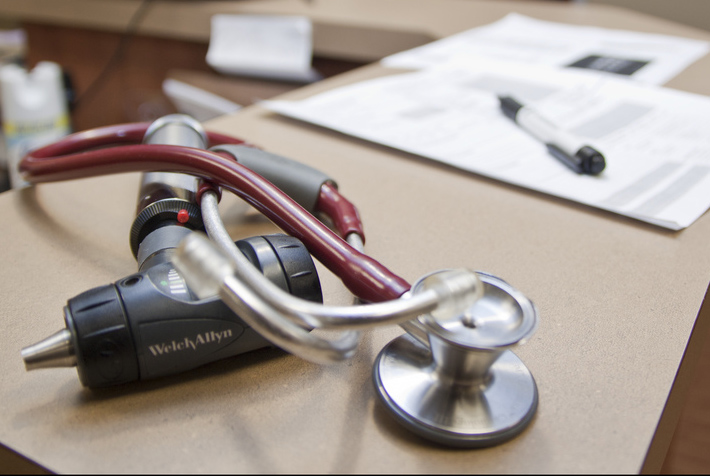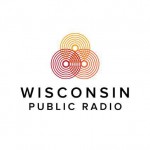Student Loan Changes Will Create ‘Barriers’ For Low-Income Medical Students
MCW President says Trump’s tax and spending act eliminates the ‘backbone’ of how aspiring doctors pay for education.

Connor Tarter (CC-BY-SA)
New changes from the Trump administration set stricter borrowing limits on students in professional programs like medical school. The head of one of Wisconsin’s medical colleges expects the change will add new barriers for people training to become doctors.
Dr. John Raymond is the President and CEO of the Medical College of Wisconsin. He told WPR’s “Wisconsin Today” that around 80 percent of their students receive financial aid, with most of that money coming from government-sponsored and government subsidized loans.
“It’s expensive to go to medical school,” Raymond said. “Without those loans, people that don’t have significant means would struggle to be able to pay the tuition.”
President Donald Trump’s tax and spending bill he signed into law earlier this month, dubbed the “One Big Beautiful Bill Act,” includes a suite of changes to federal student loans, including expanding Pell Grants to job training programs and limiting how much money parents and caregivers can borrow in PLUS loans to help students pay for college.
But two changes to student loans for borrowers working towards professional graduate degrees like medical school pose new barriers for students.
The law will raise graduate students’ borrowing limit to a max of $200,000 over the course of their life. The previous lifetime cap was $138,500 for professional students.
But this new raised cap was paired with the elimination of the Grad PLUS program, which will sunset in July 2026. That program allows students to borrow additional money up to the cost of attendance of a medical school program.
The average cost of attending both of Wisconsin’s medical schools — UW School of Medicine and Public Health and the Medical College of Wisconsin — surpasses the new caps.
UW-Madison’s medical school estimates students will spend at least $330,000 in tuition and other costs to get their degree. The Medical College of Wisconsin — a private medical school — lists the cost of attendance for one student at nearly $400,000 across four years.
Congressional Republicans have said the caps on federal borrowing for student loans are to rein in the cost of rising tuition. Sen. Bill Cassidy, R-La., told The Hill that “if you allow more money to be borrowed, schools just raise their tuition more, and that’s what we’re trying to stop.”
MCW’s Raymond shared his concerns about these changes with “Wisconsin Today” and discussed the role financial aid plays in helping students attend medical school.
The following interview has been edited for brevity and clarity.
Kate Archer Kent: What importance do these types of loans have in helping students afford the cost of medical school?
Dr. John Raymond: These loans are essential for many of our students. Putting a cap of $200,000, it’s somewhat problematic, because the average lifetime debt burden for education of a student that graduates from a private medical school is about $250,000.
And to factor in that maybe 20 percent of the students have no debt, you can see that that $200,000 cap would require the students then to go to the private market to make up the difference in the (absence of) federally-supported loans.
The Grad PLUS loan itself is actually the backbone of the loans that many of our professional and graduate students take out to really help them be able to afford their education.
The reason why these are desirable loans is that they do not require a co-signature and they have favorable terms, including repayment terms … This will require students to take out private loans under which there may be unfavorable terms. They may require a co-signature from someone else, and those will become barriers for students that perhaps come from underserved areas (that) may be on the low end of the socioeconomic scale or they’re first-generation college students. This is going to be a significant challenge for many of those students.
What I’m most concerned about is that we will lose a segment of our population in terms of their willingness or ability to go to medical school … We may be shifting more toward a demographic of people that already have significant means and significant wealth that are able to afford to go to medical school.
KAK: Republicans in Congress have claimed caps on student loan borrowing are to put the onus on colleges to rein in the rising cost of tuition. Will you lower the cost of tuition in response to these caps?
JR: At MCW, we already subsidized the tuition of our medical students by about 50 percent. We collected $71 million of tuition revenue last year, but the total cost of our education program was about $142 million.Why is it so expensive? First of all, we live in a technology-rich environment that has to be refreshed every three years or so. Secondly, the student-teacher ratios really require a highly compensated faculty member to be spending a lot of time with small groups of students. So you can’t pack a lecture hall with hundreds of students and get the economy that you might have there in terms of the teaching.
In many cases, including the Medical College of Wisconsin, we’re taking highly-compensated clinical faculty away from the clinic or highly-compensated research faculty away from their laboratories … they are expensive. And there’s an opportunity cost because then they’re not in the clinic or they’re not in their lab pursuing discoveries and new grants.
KAK: We’ve also seen some schools like NYU Grossman School of Medicine and Cleveland Clinic Lerner College of Medicine going toward a full tuition scholarship for medical school students, regardless of their ability to pay. Is this a model the Medical College of WIsconsin could pursue?
JR: I think we will see more of it if we have a donor that has $2.5 billion that (they) would like to give us.
We’re the third largest private medical school in the country at 270 students per class, and we have to subsidize the education of each and every one of those. So it really requires two things: One is a donor that has that kind of capacity and the second is a relatively small class size.
Cleveland Clinic has a very small medical school. And (with) the NYU example, they actually had to shrink their medical school class to accommodate the endowment that was created by their donor base. Although that lowers the barrier of entry for students because they’re not accumulating debt, there also are fewer spots that the medical school is able to provide.
Student loan changes will be ‘barriers’ to lower income Wisconsin medical students was originally published by Wisconsin Public Radio.
If you think stories like this are important, become a member of Urban Milwaukee and help support real, independent journalism. Plus you get some cool added benefits.




















